Honey and white table sugar are two of the most commonly used sweeteners. Brown sugar is often regarded as the more healthful option, and honey, even more so, but is that really the case?

So, let’s take a look at which one would actually be the healthier option.
Quick Overview
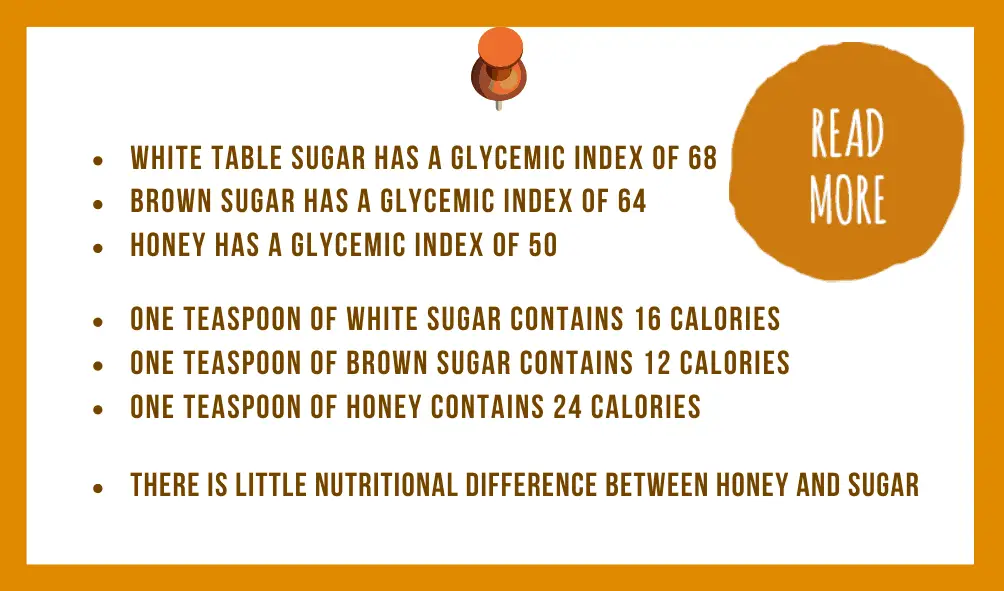
There are many different types of sweeteners we add to our baking or hot drinks. The main ones I will cover in this post are white, brown, raw sugar, molasses, and honey.
Keep reading to find out which one you should choose and why…
Different Types Of Sugar

Although there are numerous types of sugar, they each have very similar nutritional values. All of them, at the basic structure, are either Fructose, Glucose, and Sucrose, each one differing in chemical structure from the others.
Fructose and Glucose have different chemical structures, while Sucrose is a combination of the two.
The main factor that distinguishes one from another is its source. Sugars can originate from beets, coconut, fruits, palm, nectar, or sugarcane. The way each of these is processed can also affect the characteristics of the final product.
White Sugar
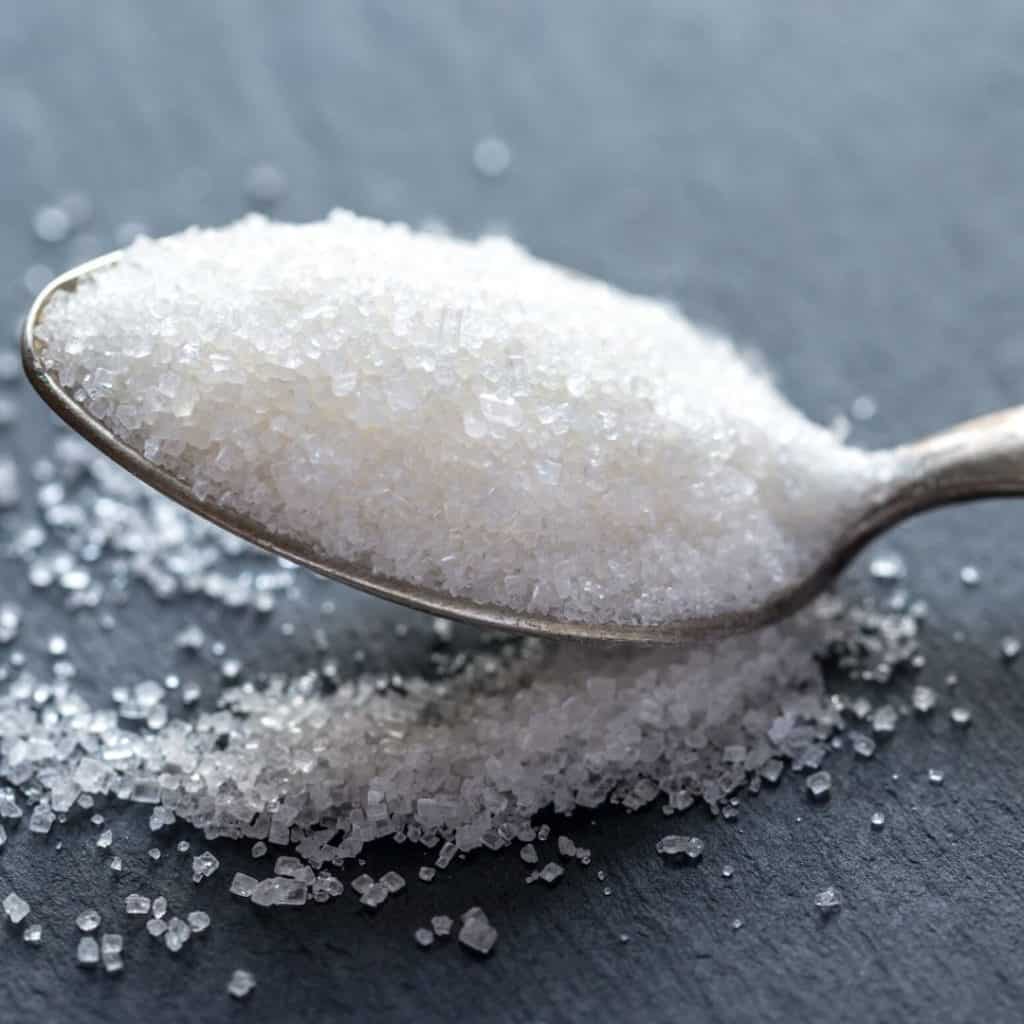
White, or table sugar, as it is often referred to, is the end product of processing and refining sugarcane or beet. During refinement, compounds, and minerals that give it its color are removed along with any moisture. This leaves what we know as this refined white granulated powder.
The byproduct containing the extracted compounds during sugar refining is known as molasses.
What Is Raw Sugar?
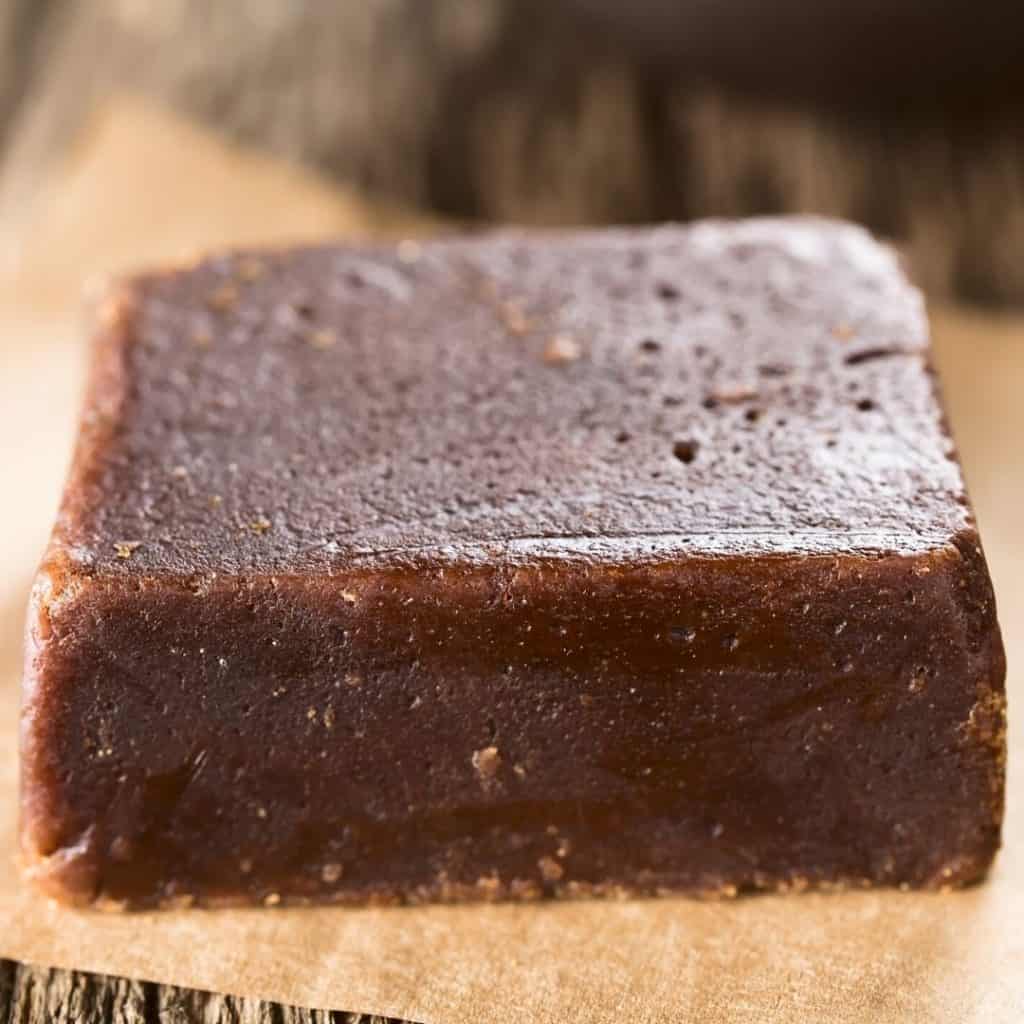
This is formed when the final stage of the refining process detailed above is bypassed.
Raw sugar is tacky mass due to the presence of the molasses that make it moist and syrupy and give it its typical dark brown color and burnt malty flavor.
How Is Brown Sugar Made?

Brown sugar is made by adding various amounts of molasses back to refined white sugar. Depending on the amount of molasses added, the taste and color will vary from light brown to dark.
Brown, raw sugar, and molasses contain the compounds and minerals that give them their brown color. A byproduct of sugar breaking down during the refinement process is caramel.
Which Sugar Is The Healthiest?
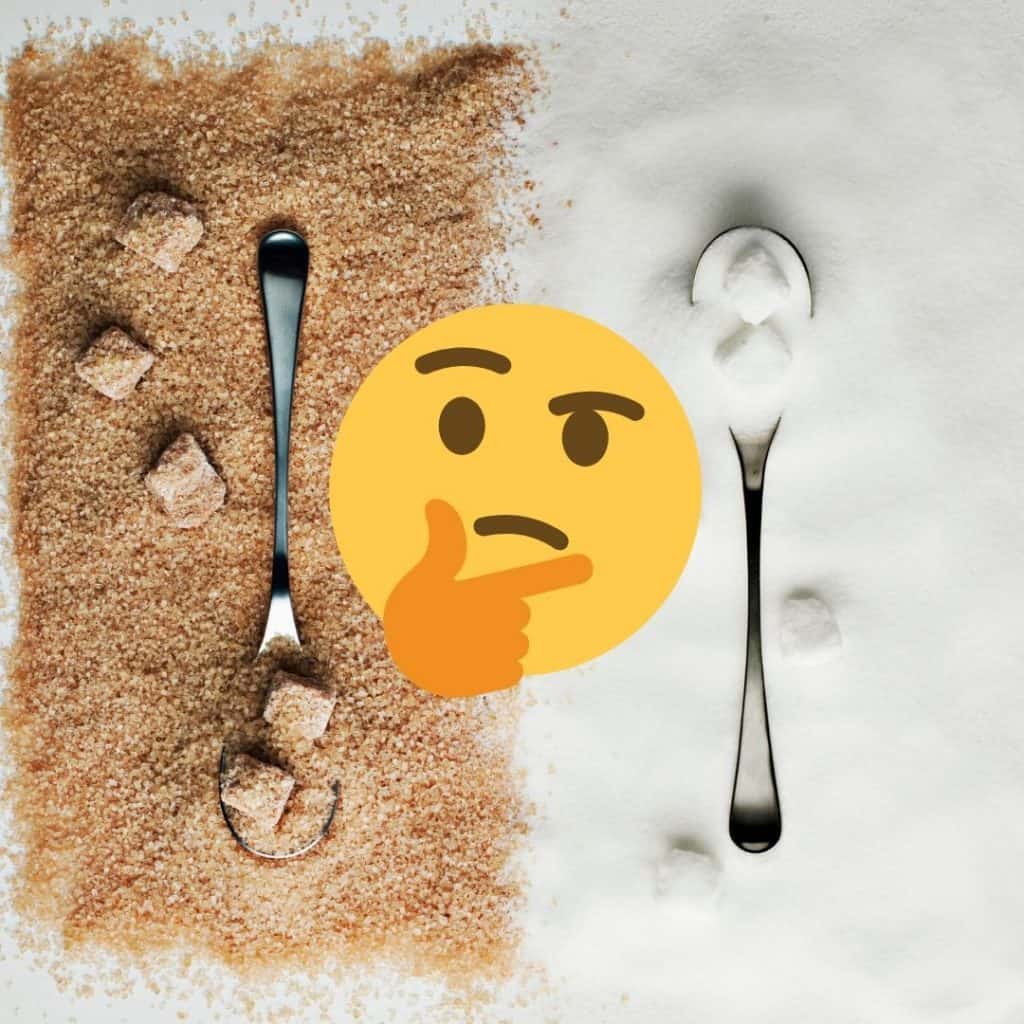
It is common knowledge that eating brown rice instead of white is a more healthy option, and whole wheat bread comes out on top of white bread. However, can we say the same thing about these colors when talking about sugar?
Is it a good idea to substitute your white sugar consumption with brown?
Well, let’s consider a few things:
Processing and refining any food type will reduce its content of minerals and, therefore, its antioxidant capacity.
Brown sugar gets many of these minerals back when molasses is added during its production. Most noteworthy of these minerals are calcium, iron, magnesium, and potassium, none of which are present in white sugar.
However, the amounts of these minerals are only traced levels, so there is no significant health benefit in using brown sugar in preference to white.
Compared to other foods, the antioxidant levels in brown sugar are negligible. So, the only significant difference between brown sugar and white is the taste and the effects on baking products. The two are very similar as far as nutritional value goes.
Are you trying to cut back on calories?
Here is a natural herb that has zero calories, and it is up to 300 times sweeter than sugar.
Here is what you should know about this promising sweetener!
Nutritional And Calorie Content Of Brown Sugar
The molasses that gets mixed back into the refined white sugar is responsible for the coloring of brown sugar. It also causes a very slight but negligible increase in its nutritional value.
As far as nutrition goes, the main difference between the two is that the brown version has a bit more calcium, iron, and potassium compared to white. However, as I have already stated, these levels are minimal and do not provide a good source of vitamins or minerals.
Brown sugar also has slightly fewer calories than white, but once again, the difference is not that significant.
One teaspoon of brown sugar will give you 12 calories compared to 16 in the white one.
What Is The Glycemic Index Of Brown Sugar?
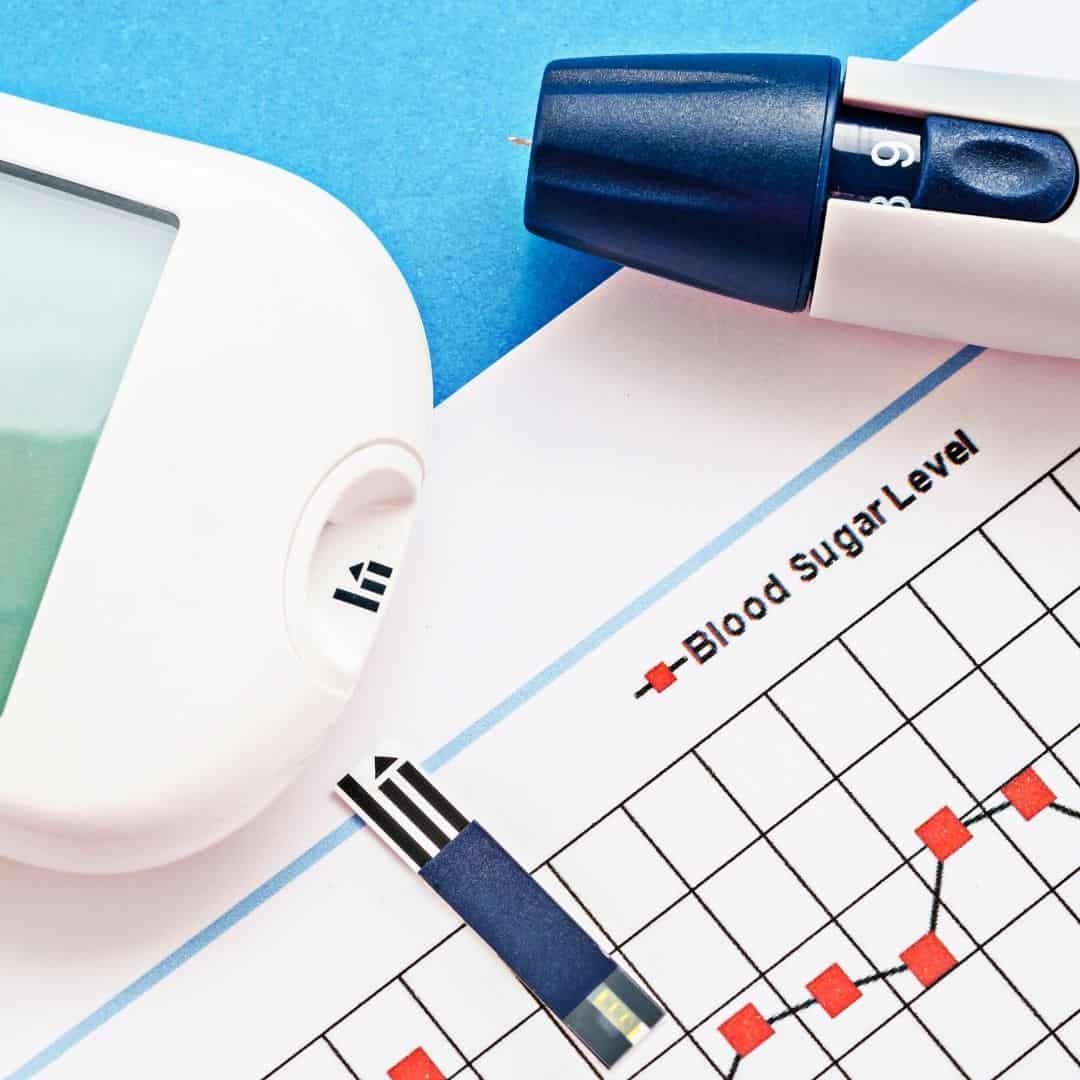
Your Glycemic Index (GI) is the amount of Glucose that you have in your blood after carbohydrate is consumed. The reference carbohydrate for this index is pure Glucose, which is allocated a glycemic value of 100. Foods with a higher Glycemic Index indicate that they have a greater capacity to raise blood sugar levels. This is not good, as high blood sugar levels can cause health problems.
- Brown Sugar has a Glycemic value of 64, which is defined as being medium-level GI.
- White table sugar has a glycemic index of 68, which is just on the borderline of a high GI level.
How Does Brown Sugar Taste?
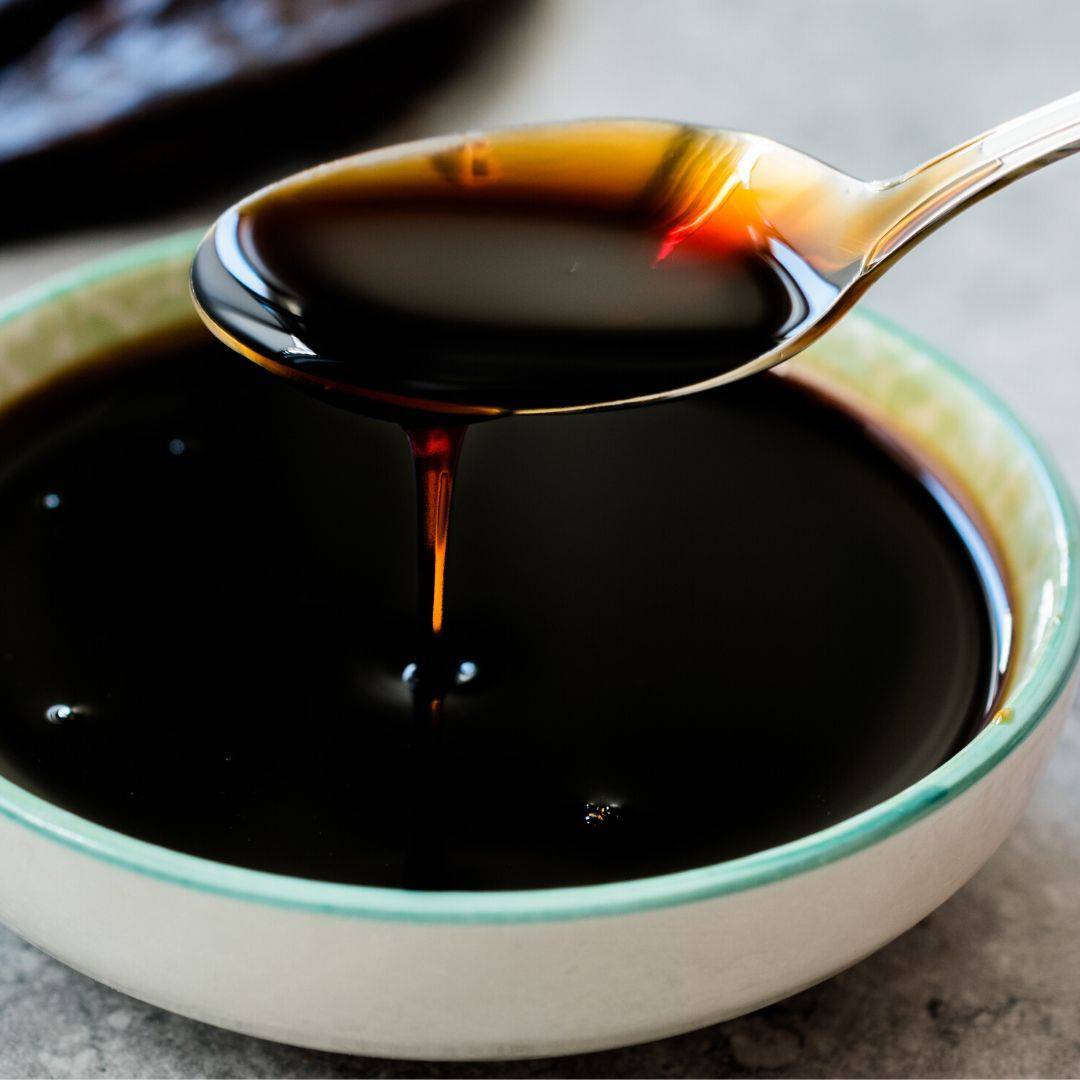
Molasses is the dark, syrupy byproduct that gives brown sugar its color and robust caramel flavor.
As already mentioned, one of the few differences between brown and white sugar is the taste. The taste of brown sugar is brought about by the added molasses, and it resembles a caramel or toffee flavor.
An average light brown sugar contains approximately 5 percent molasses, and it has a slight, warm caramel flavor. If replacing your white sugar intake with brown is a consideration, then you should make the taste your primary factor in your decision.
If you like a strong caramel taste with a deep molasses flavor, go for a really dark brown sugar. If not, then the light brown one has a milder and less complex taste.
What About The Sweet Nectar From Natural Sources?
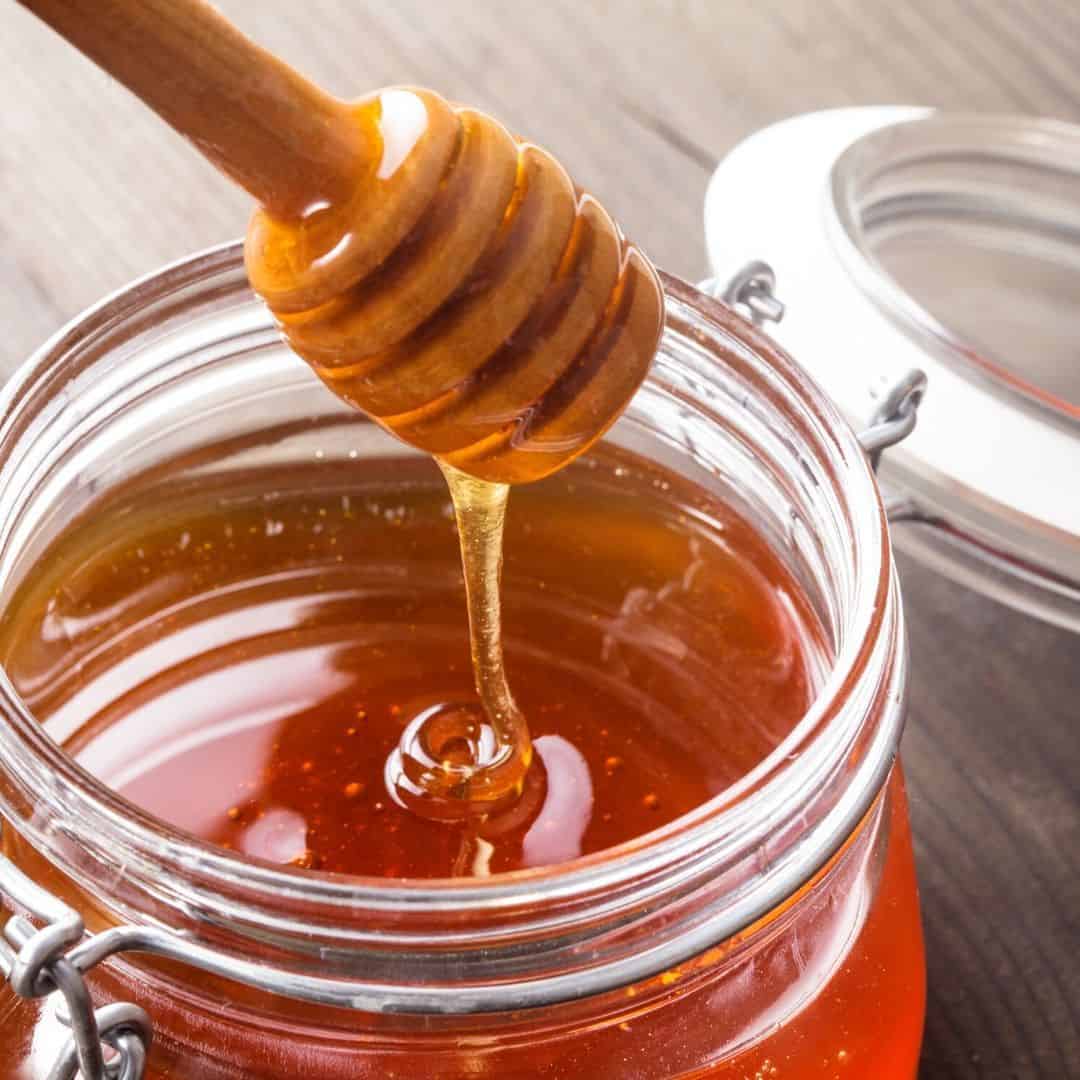
It is difficult to miss the news these days that all types of added sugar are harmful to your health. Intake of this ‘sweet poison’ is getting the blame for a whole range of health issues, and too much of it will not do your waistline any good either. That certainly seems to be the case for refined sugars.
But what about the sweetener that comes directly from a natural source such as honey? It has got to be better for you than refined sugars, right?
Honey Vs. Brown Sugar
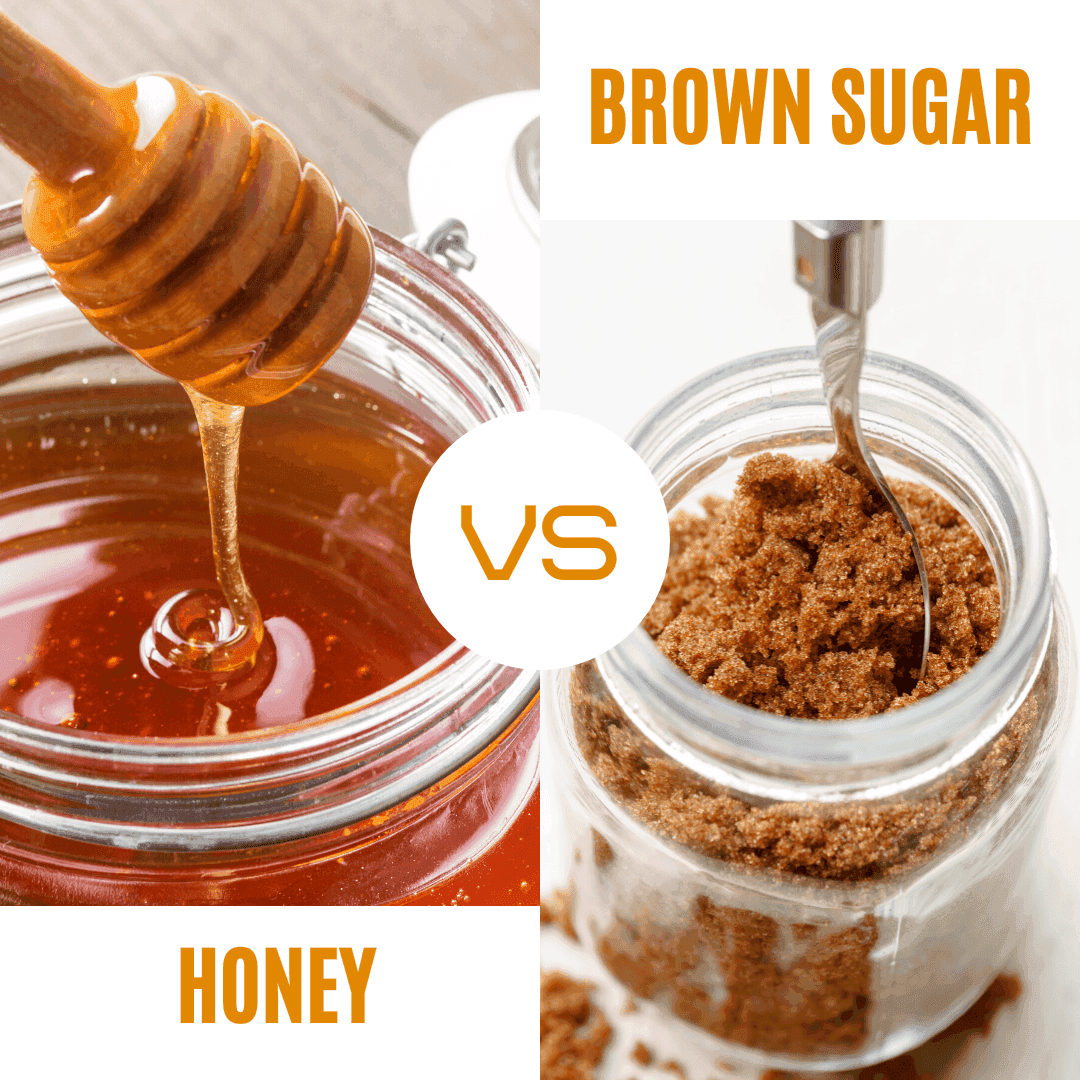
As far as nutrition goes, honey contains a variety of antioxidants, minerals, proteins, and vitamins, albeit in small quantities. So, in theory, this should make honey more healthy than brown sugar, right?
Pros
- Honey has a lower Glycemic Index than brown sugar.
- Honey is sweeter, so you may need less of it.
- It has more vitamins and minerals.
- It contains digestive enzymes and more antioxidants.
- It has antimicrobial and antiseptic properties.
Cons
- Honey has double the calories as brown sugar.
- Honey is more expensive.
It seems that honey is the clear winner here, but…
Now, if you are planning to load honey onto your breakfast cereal or bowl of porridge, unfortunately, it isn’t much better than layering that porridge up with granulated sugar, whatever the color.
You have to keep in mind that they’re both sugar and are processed by the body virtually the same.
Although honey contains a trace of antioxidants, vitamins, and minerals, the amount is very small, and the effects on our bodies are negligible because of the small amount.
Also, there is no substantial evidence for all the health claims to support any of these theories, and more research is needed.
In addition, some of the honey in the shops are cut with cheaper sweeteners like high fructose corn syrup and could even contain some artificial ingredients.
So, when it comes to brown sugar vs. honey, the only factor you should be placing your decision on is the taste.
Keep reading as I will cover all of that in a more detailed blow.
Raw Nectar Vs. Supermarket Honey
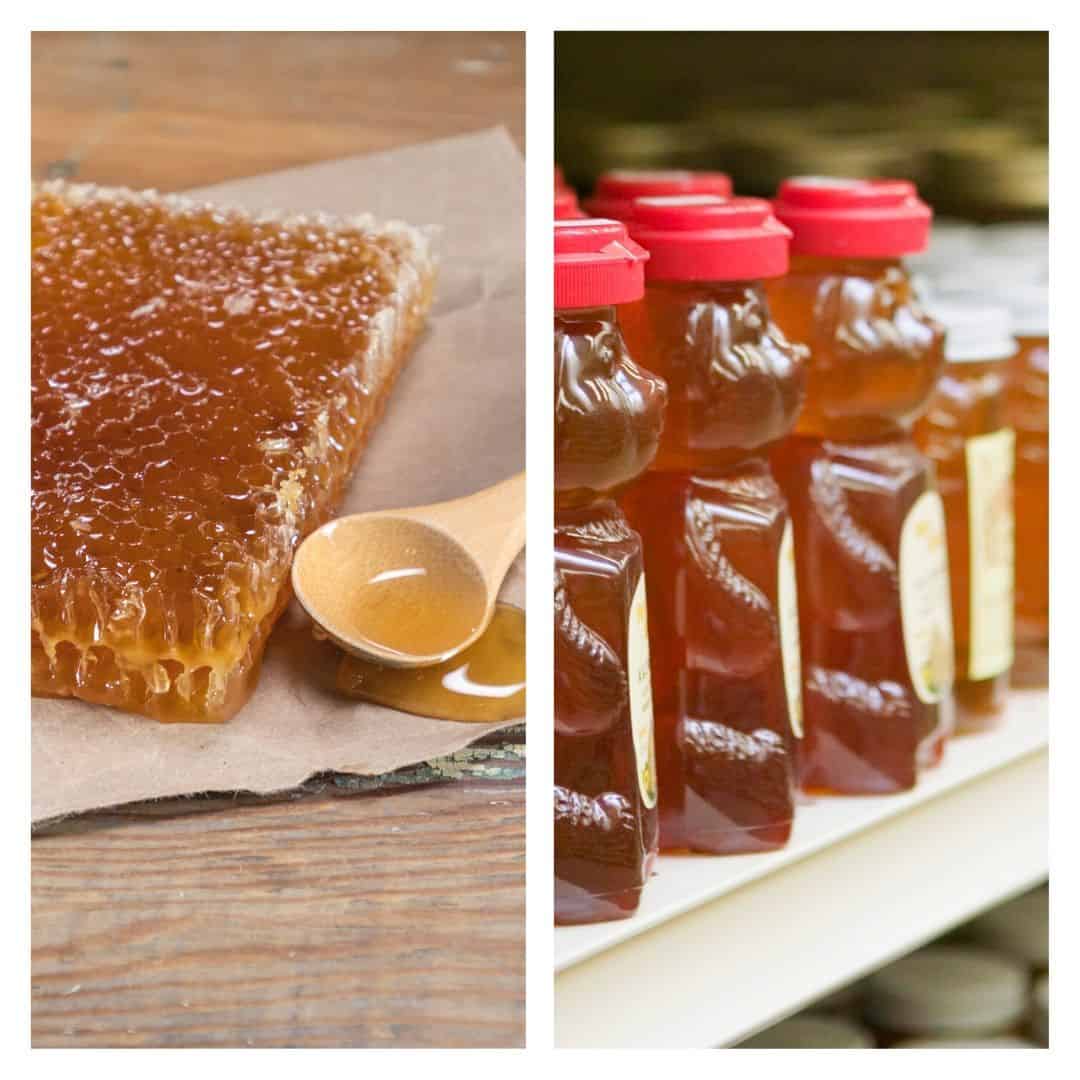
Raw honey is slightly healthier for a variety of reasons. In its natural form, straight from the bee hive, it contains antioxidants, vitamins and minerals, healthy bee pollen, and bee propolis.
However, there is no actual scientific proof as yet that raw nectar is any more healthy than regular prepossessed ones. However, many people are convinced that processing removes some of the health benefits.
So, they subsequently believe that raw honey is better for their health than processed honey.
One benefit of using honey over sugar is the fructose content. Our taste buds consider Fructose to be much sweeter, so you don’t need to use as much to get that same ‘hit’ of sweetness.
So, What Is Raw Honey?

Raw honey is a product that comes straight from the bee hive without having any form of processing or pasteurization take place. It is a sweet-tasting, golden-colored, thick liquid that is stored in hexagonal cells called honeycomb.
It contains pollen, beeswax, and very often parts of dead bees! It usually gets passed through a filter to remove most of these impurities. Some impurities may still exist in minimal amounts but are entirely safe to eat
The following minerals and vitamins are contained within the raw, natural honey:
- Calcium
- Magnesium
- Manganese
- Niacin
- Pantothenic acid
- Ascorbic acid
- Phenolic acids
- Phosphorous
- Potassium
- Riboflavin
- Zinc
- Riboflavin
- Vitamin B6
Is Supermarket Honey Any Good?

Regular commercial honey, the one you will find in most supermarkets, goes through a process of pasteurization to kill off yeast cells. This also makes it last longer, as well as making it clearer and more appealing to the eye.
The downside of pasteurization is that it reduces the amount of nutrition that it has. Regular honey contains less bee propolis and bee pollen than the raw version.
Also, what you have to keep in mind is that some supermarket jars of nectar are mass-produced and imported from India and China.
Some products from around the world have been found to contain heavy metals, antibiotics, and other contaminants that we wouldn’t want or expect or to see in our nectar. Luckily these cases have been very rare, and supermarket honey is as safe to eat as any other food product.
Some companies also add High Fructose Corn Syrup to it which is made from genetically modified corn.
As I mentioned above, supermarket honey is heavily filtered, and all or most of the pollen is removed. The removal of pollen makes it impossible to determine the botanical origin of the product or whether or not it is even honey.
A survey conducted by Food Safety News on supermarket honey in the United States found that 76% of the products had no pollen in them at all. Honey without bee pollen is not honey, it is just a sugary honey-flavored syrup.
Glycemic Index Of Honey
The GI of honey is around 50. It is lower than that of brown sugar, which is 64.
How Many Calories Are In One Teaspoon Of Honey?
Like brown sugar, honey is made up mostly of Glucose and Fructose, albeit in differing proportions. One teaspoon of honey contains 24 calories. That is double when compared with a one-level teaspoon of brown sugar, which contains 12 calories.
Is Honey A Good Source Of Antioxidant?
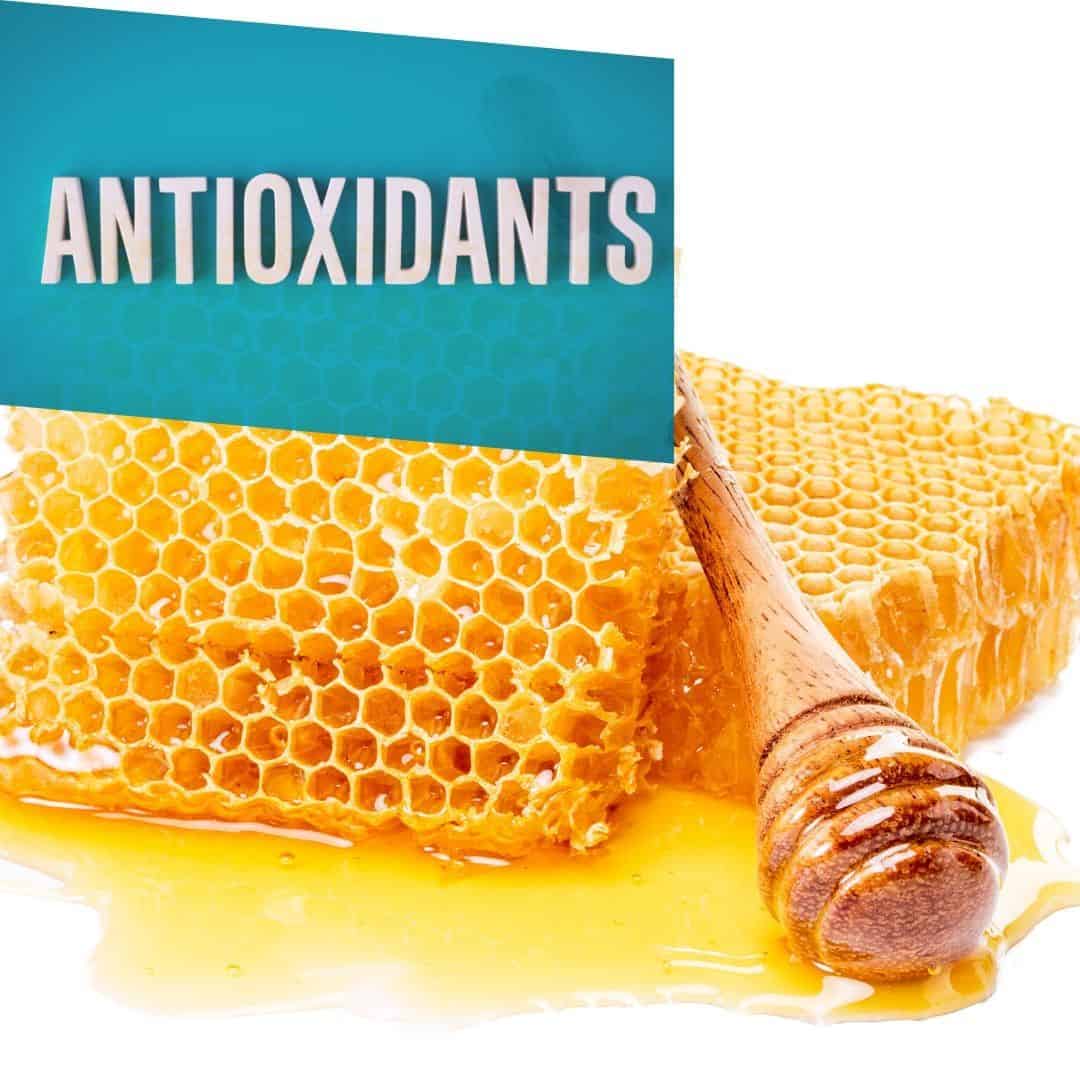
Yes, and No, honey (particularly raw, unpasteurized one) contains polyphenols, which are powerful antioxidants, including enzymes, iron, phenolic acids, manganese, riboflavin, vitamin B6, niacin, and potassium.
So, these are not entirely ’empty’ calories; but the amounts are not that significant.
A much better source of antioxidants, minerals, and vitamins is through consuming whole foods like fruits and vegetables.
Do NOT consider honey to be healthy food or even a good source of nutrition. You would need to consume over 10,000 calories from it to get your recommended daily dose of some of these vitamins and minerals!
Let’s say that you eat one tablespoon of honey a day. Then it has less than 1 percent of your recommended daily allowance of vitamins and minerals per serving. So, it is not considered a very good source of any of these minerals and vitamins mentioned above.
How Much Honey A Day?

Although honey has a bit more nutrients than brown sugar, this is not an excuse to go overboard on its use. This is because it is higher in calories, and it may not be an as healthy alternative to sugar as first thought.
As a very general rule of thumb, on the assumption that you follow a generally active lifestyle and balanced diet, not more than 6 teaspoons of honey per day is recommended.
According to the Journal of Nutrition, it has the same metabolic effects as the much-maligned high-fructose corn syrup does. The Journal of Nutrition believes that rather than continually pitting different sweeteners against each other, our primary focus should be on limiting our intake of them all.
Glucose and Fructose that is contained within honey can elevate triglyceride levels and cause inflammation. These, in turn, can raise the risk of heart disease in the long term.
Generally speaking, your body deals with calories from honey the same way that it does with calories from brown or white sugar. It should only be consumed in small quantities. It is vital to remember that nearly 100 percent of the calories you get from this golden nectar comes from Fructose and Glucose.
It is even higher in calories per one-tablespoon serving than regular sugar. So, concentrate on limiting all the high-calorie sweeteners rather than focusing on which one is best.
Which One Is Better For Vegans?
As most vegans do not eat honey then you might think that brown sugar is a safe vegan-friendly choice, but that is not always the case.
The sugar manufacturers often use bone char as a decolorizing filter, which allows the sugarcane to become such a lovely pure white powder.
As I already covered above, brown sugar is made by adding molasses back to the white sugar, so it is also made using bone char.
However, this processing method is mostly practiced in the US and not so much in the UK.
But even in the US, you can still find some golden brown vegan sugar like this one here on Amazon >>>
Summary
So, when it comes to brown sugar vs. honey, neither of them is really good for you in terms of health.
Also, if you keep their consumption minimal, then they are not really bad for you either. If you really must pick one over another, then honey may be a slightly healthier option to have in your morning tea or coffee. But it should still be treated with the same caution as other high-calorie sweeteners.
The World Health Organization’s recommendations aim to limit our intake of all high-calorie sweeteners, including honey, to 10 percent of our daily calorie intake. So go easy as far as consumption of this sweet, golden liquid is concerned.
Trying to cut back on sugar?
Here is a zero-calorie plant-based sweetener that sounds too good to be true.
Find out what makes this sweetener so different from others!

